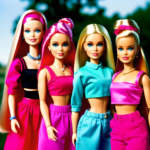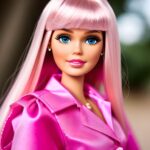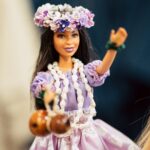
Barbie, the iconic doll that has captured the hearts of millions around the world, has a fascinating history of evolution and design changes. From her initial introduction in 1959 to the present day, Barbie has gone through numerous transformations, reflecting the changing times and ideals of society. This article explores the intriguing journey of Barbie, unveiling the various stages of her evolution and the significant design changes she has undergone throughout the years. Get ready to embark on a nostalgic trip down memory lane as we uncover the captivating story behind the evolution of Barbie and how she has become an enduring symbol of fashion, empowerment, and imagination.
Early Beginnings of Barbie

The inspiration behind Barbie
The story of Barbie begins with Ruth Handler, the co-founder of Mattel, who noticed her daughter playing with paper dolls and envisioning them as grown-up women. This sparked the idea of creating a doll that would allow girls to imagine themselves as adults, opening up countless possibilities for their future dreams and aspirations.
The creation of the first Barbie doll
Ruth Handler worked closely with her husband Elliot Handler, who was a co-founder of Mattel, and their business partner Harold Matson to bring the idea of Barbie to life. They hired a designer named Jack Ryan, who helped create the prototype for the first Barbie doll. It was then that they realized there was a gap in the market for dolls that resembled teenagers or young adults, as most dolls at that time were either babies or little girls.
The debut of Barbie at the American International Toy Fair
On March 9, 1959, Barbie made her debut at the American International Toy Fair in New York City. Dressed in a black and white swimsuit with her iconic ponytail hairstyle, Barbie instantly captivated the audience and the rest of the world. This marked the beginning of a cultural phenomenon that would revolutionize the toy industry and redefine the concept of play for generations to come.
The Original Barbie Design
Barbie’s original appearance
The first Barbie doll had a distinctive look that set her apart from other dolls of the time. She had a tall and slender figure with an arched eyebrow, cat-eye makeup, and bright red lips. Her blonde hair was styled in a ponytail, which would later become one of her most recognizable features. The proportions of her body were also different from other dolls, with a small waist, long legs, and full breasts, which would become a subject of both admiration and controversy.
The fashion choices of the original Barbie
From the beginning, Barbie was a fashion icon. Her original swimsuit design set the tone for the countless outfits that would come in the future. Barbie’s wardrobe was a reflection of the times, featuring stylish and glamorous dresses, suits, and casual wear. She became a symbol of high fashion, with her outfits often mirroring the latest trends from the runways of Paris and Milan.
The controversies surrounding Barbie
Despite Barbie’s instant success, she did not come without controversy. Criticisms arose regarding her body image and unrealistic beauty standards. Many argued that Barbie promoted an unattainable ideal of beauty, setting unrealistic expectations for young girls. However, others saw Barbie as a positive influence, claiming that she encouraged creativity and allowed girls to imagine themselves in various roles and careers.
Evolution of Barbie’s Physical Features

The introduction of different ethnicities
Over the years, Barbie became more inclusive and diverse. In 1967, Barbie’s friend Christie was introduced, the first African-American doll in the Barbie line. This was an important step towards reflecting the multicultural society we live in. Since then, Barbie has continued to evolve and now offers dolls with various ethnicities and a range of skin tones, hairstyles, and facial features.
Changes to Barbie’s facial features
Barbie’s facial features have also undergone changes throughout her history. Over time, her features became more refined, with attention to detail in her eyes, nose, and mouth. In recent years, Mattel has introduced dolls with diverse facial sculpts to represent different ethnicities and reflect the beauty of various cultures around the world.
The evolution of Barbie’s body shape and size
One of the most significant changes to Barbie’s physical appearance was her body shape and size. In 2000, Mattel introduced the “Generation Girl” line, which featured Barbie dolls with a more realistic body shape and proportions. This was a response to the criticisms surrounding Barbie’s unrealistic physique. Since then, Barbie has continued to embrace a more diverse range of body types, including tall, petite, and curvy dolls.
Barbie’s Fashion Evolution

The early fashion choices for Barbie
Since her early days, Barbie has been a trendsetter in the world of fashion. Her outfits showcased the latest styles and trends, making her a style icon for girls everywhere. Whether it was a glamorous evening gown, a casual denim outfit, or a career-inspired ensemble, Barbie’s fashion choices were always on point. Her extensive wardrobe allowed girls to dress her up for any occasion and encouraged imaginative play.
Collaborations with famous fashion designers
To elevate Barbie’s fashion game even further, Mattel has collaborated with renowned fashion designers over the years. These collaborations have resulted in limited edition Barbie dolls wearing designer outfits inspired by their respective collections. From Oscar de la Renta to Christian Dior, Barbie has had the privilege of wearing creations from some of the most esteemed fashion houses in the world.
Barbie’s cultural and historical inspired fashion lines
Barbie’s fashion is not limited to modern trends but also pays homage to various cultural and historical influences. The “Dolls of the World” series celebrates different countries and their traditional costumes, introducing young girls to different cultures and fostering an appreciation for diversity. Similarly, Barbie has released special editions inspired by iconic periods in history, such as the Renaissance or the Roaring Twenties, allowing girls to explore different eras through fashion and play.
Barbie’s Career and Role Models
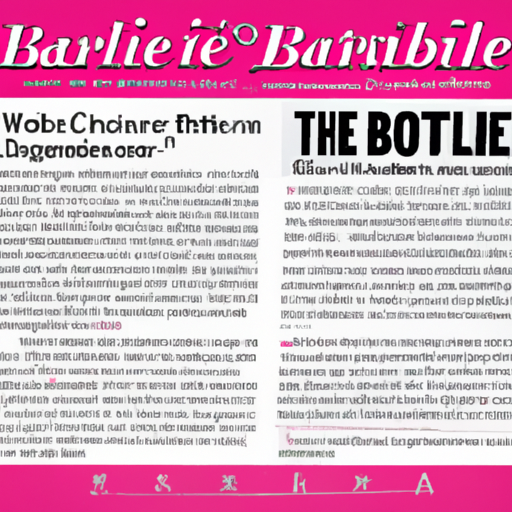
Barbie’s career options throughout the years
Throughout her existence, Barbie has had numerous careers, breaking gender stereotypes and encouraging girls to dream big. From a fashion model to an astronaut, Barbie has embodied a wide range of professions. She has been a doctor, a teacher, an engineer, a chef, and much more. Barbie’s career choices have reflected the changing roles and opportunities available to women in society, inspiring girls to pursue their passions and believe in their potential.
Barbie’s portrayal of role models and empowerment
In addition to her career options, Barbie has also portrayed real-life role models who have made significant contributions in various fields. Barbie dolls have been created in the likeness of iconic women such as Amelia Earhart, Frida Kahlo, and Rosa Parks, to name a few. These dolls celebrate the achievements of these remarkable individuals and inspire young girls to follow in their footsteps.
The iconic Barbie doll collaborations with real-life role models
Barbie has taken her celebration of role models even further by collaborating with influential women of our time. Since 2015, Barbie has partnered with extraordinary women like Ava DuVernay, Misty Copeland, and Ibtihaj Muhammad to create one-of-a-kind Barbie dolls that symbolize empowerment and diversity. These collaborations have given young girls the opportunity to see themselves represented in the dolls they play with and have highlighted the accomplishments of these role models.
Barbie’s Influence on Pop Culture
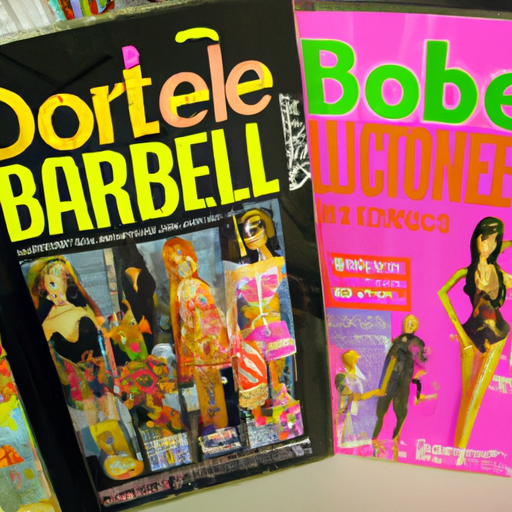
Barbie’s impact on the toy industry
Barbie has had a profound impact on the toy industry since her debut. The introduction of a doll that represented a young adult woman opened up a whole new market for toys specifically designed for older girls. Barbie’s success paved the way for other fashion dolls and inspired countless generations of young girls to engage in imaginative play. She has become an iconic figure in the toy industry and continues to be a symbol of creativity and self-expression.
Barbie in movies, TV shows, and music
Barbie’s influence extends beyond the toy aisle. She has starred in numerous movies and TV shows, captivating audiences with her adventurous spirit and empowering storylines. These movies and TV shows have not only entertained but also inspired young girls to believe in themselves and chase their dreams. Additionally, Barbie has ventured into the world of music, releasing her own albums and music videos, further showcasing her versatility and talent.
Barbie’s presence in social media and digital games
In the digital age, Barbie has successfully transitioned into the online world. She has a strong presence on social media platforms, with millions of followers across various platforms. Barbie’s online presence allows her to connect with her fans and inspire girls from all corners of the world. Moreover, Mattel has developed a wide range of digital games and apps that allow girls to engage with Barbie’s world in a fun and interactive way.
Criticisms and Controversies
Body image and unrealistic standards
Barbie’s physique has been a subject of criticism and controversy since her inception. Many argue that her unrealistic body proportions create an unattainable beauty standard for young girls, potentially impacting their perception of their own bodies. In response to these concerns, Mattel has introduced more diverse body types, aiming to promote inclusivity and body positivity.
Gender stereotypes and inclusivity
Barbie has also faced scrutiny for perpetuating gender stereotypes, with some arguing that her focus on fashion and appearance reinforces traditional gender roles. However, Barbie has made efforts to challenge these stereotypes by showcasing diverse career options for girls to aspire to. In recent years, Barbie has released dolls with different skin tones, hairstyles, and abilities, promoting inclusivity and celebrating diversity.
Responses to criticisms and efforts towards inclusivity
In recent years, Mattel has taken strides to address the criticisms surrounding Barbie. They have introduced dolls with more realistic body proportions, diversified their range of skin tones, and expanded the representation of ethnicities and abilities. Mattel has also collaborated with organizations like the Special Olympics to release dolls that celebrate diversity and promote inclusivity. These efforts demonstrate a commitment to listening to feedback and evolving Barbie to better reflect the needs and aspirations of today’s society.
Barbie’s Collector Editions and Limited Editions
Introduction of collector and limited edition Barbie dolls
In addition to the regular Barbie dolls, Mattel has introduced collector and limited edition dolls for avid collectors and enthusiasts. These dolls are often released in smaller quantities and feature elaborate costumes, intricate details, and collaborations with famous fashion designers. Collector and limited edition Barbie dolls have become highly sought after by collectors around the world, often commanding high prices in the secondary market.
The popularity and value of rare Barbie dolls
Certain rare Barbie dolls have gained popularity and value over time. Vintage Barbie dolls from the early years of her existence, particularly those in pristine condition, can fetch high prices at auctions and among collectors. Additionally, dolls from specific collaborations, such as the Barbie dolls created in partnership with renowned designers like Versace or Chanel, are highly coveted by collectors.
Special collaborations with celebrities and iconic brands
Barbie has collaborated with various celebrities and iconic brands to create special edition dolls that celebrate the worlds of entertainment, sports, and fashion. These collaborations have resulted in dolls designed in the likeness of celebrities such as Marilyn Monroe, Audrey Hepburn, and Beyoncé, as well as dolls inspired by iconic fashion labels like Christian Louboutin or Moschino. These collaborations allow fans to own a piece of their favorite celebrity or brand while adding a touch of glamour to their Barbie collections.
Barbie’s Global Impact
Barbie’s popularity worldwide
Barbie’s influence extends far beyond the United States. She has achieved global success and has been embraced by children and collectors in countries all over the world. Barbie has become a cultural icon, with her timeless appeal transcending borders and language barriers. Her widespread popularity has made her a symbol of childhood and imagination in countless cultures.
Localization of Barbie dolls for different markets
To cater to the diverse preferences and cultural sensibilities of different markets, Mattel has localized Barbie dolls for specific countries and regions. This includes releasing dolls with features and attire that reflect the local culture, allowing girls to see themselves represented in their beloved Barbie dolls. These localized dolls help foster a sense of pride and identity among young girls and create a stronger connection between Barbie and her fans worldwide.
Controversies surrounding Barbie’s presence in certain regions
While Barbie has enjoyed global popularity, she has also faced resistance in certain regions due to cultural and religious factors. Some countries have criticized Barbie for promoting Western beauty standards or for conflicting with traditional values. These controversies highlight the complexities of cultural perceptions and the ongoing discussions around representation and diversity in the toy industry.
The Future of Barbie
Technological advancements and innovation in Barbie
As technology continues to advance, Barbie has embraced innovation to stay relevant and captivating for the next generation. From interactive dolls that respond to voice commands to dolls with augmented reality capabilities, Barbie has evolved with the times. Technology has allowed Barbie to offer enhanced play experiences that combine the physical and digital realms, sparking imagination and creativity among young girls.
Barbie’s role in promoting inclusivity, diversity, and empowerment
Barbie’s future lies in her commitment to promoting inclusivity, diversity, and empowerment. Mattel recognizes the importance of reflecting the diversity of society in their dolls and has made efforts to offer a wider range of skin tones, body types, and abilities. Barbie’s continued emphasis on diverse careers and role models reinforces the message that girls can be anything they want to be, regardless of their background.
Continued evolution of Barbie’s design and brand collaborations
Barbie’s design will continue to evolve to reflect the changing landscape of fashion and beauty. Mattel will likely continue to collaborate with influential designers and brands to create unique and collectible dolls. Barbie’s collaborations with celebrities and role models will also remain a key aspect of her brand, highlighting the achievements and inspiring stories of remarkable individuals.
In conclusion, Barbie’s evolution and design changes have made her an iconic and beloved figure for generations of girls and collectors alike. From her early beginnings as a teenage fashion model, Barbie has grown to represent empowerment, diversity, and endless possibilities. As she continues to adapt to the ever-changing world, Barbie will undoubtedly leave a lasting impact on the toy industry and the lives of those who cherish her.



